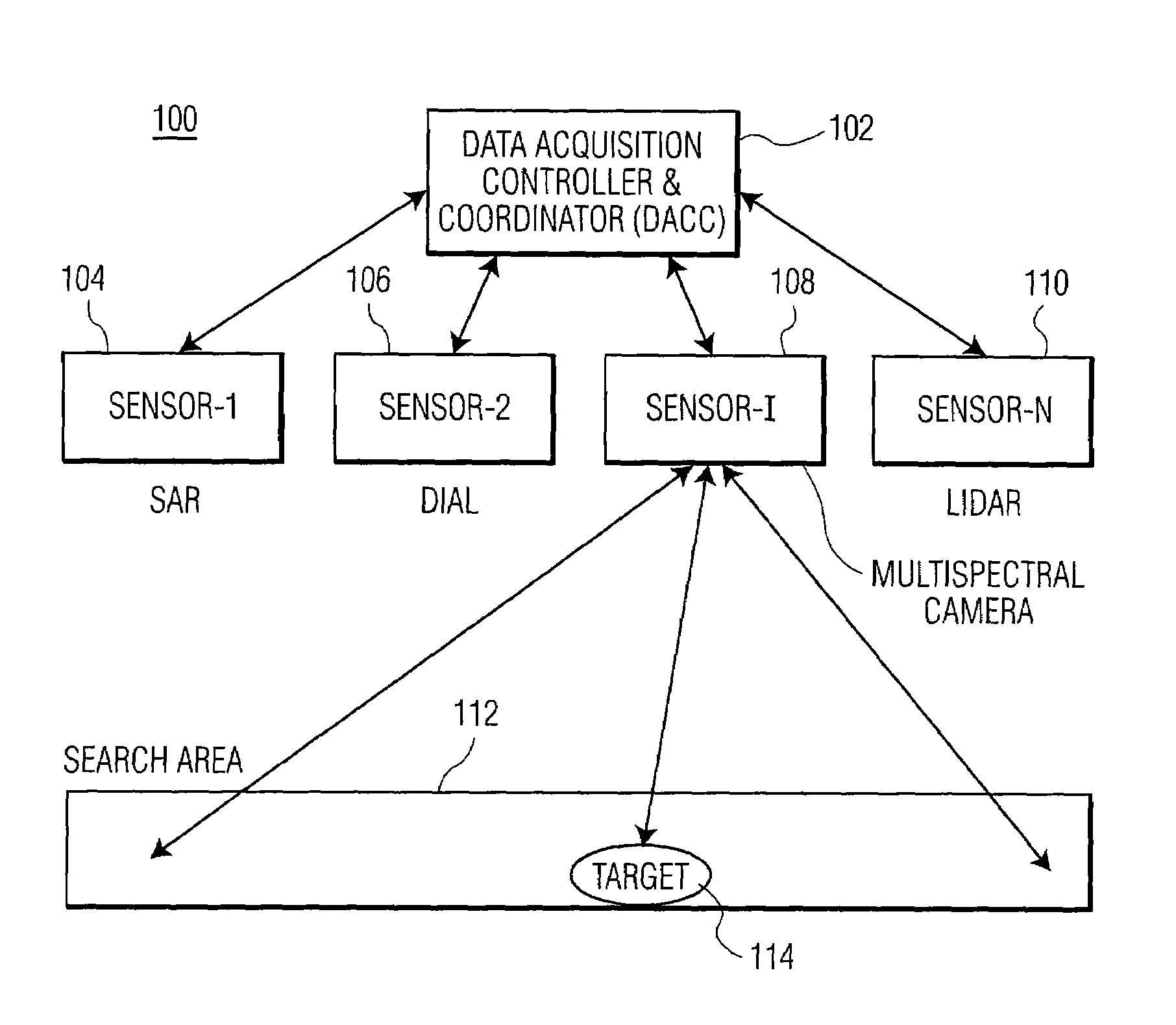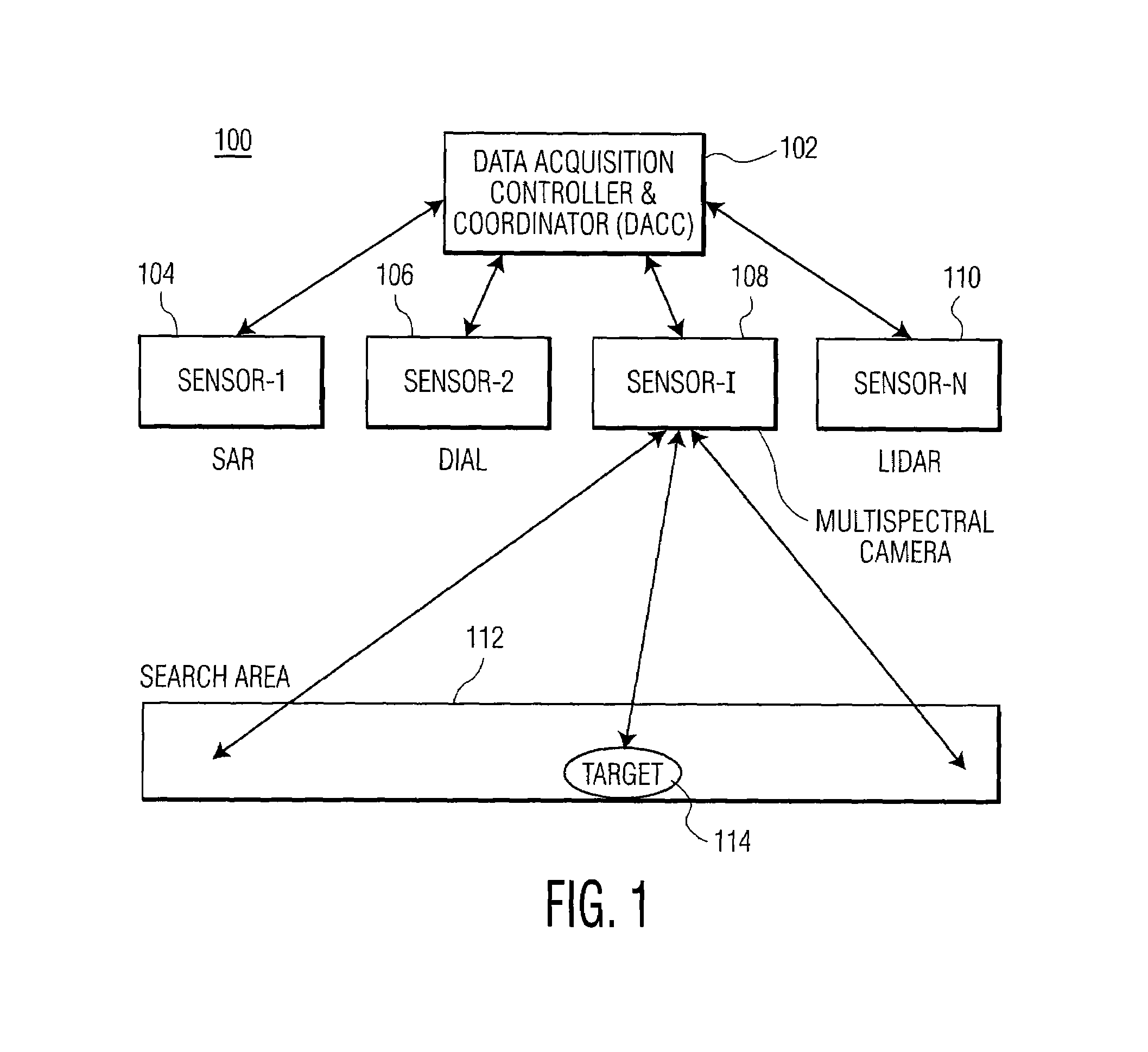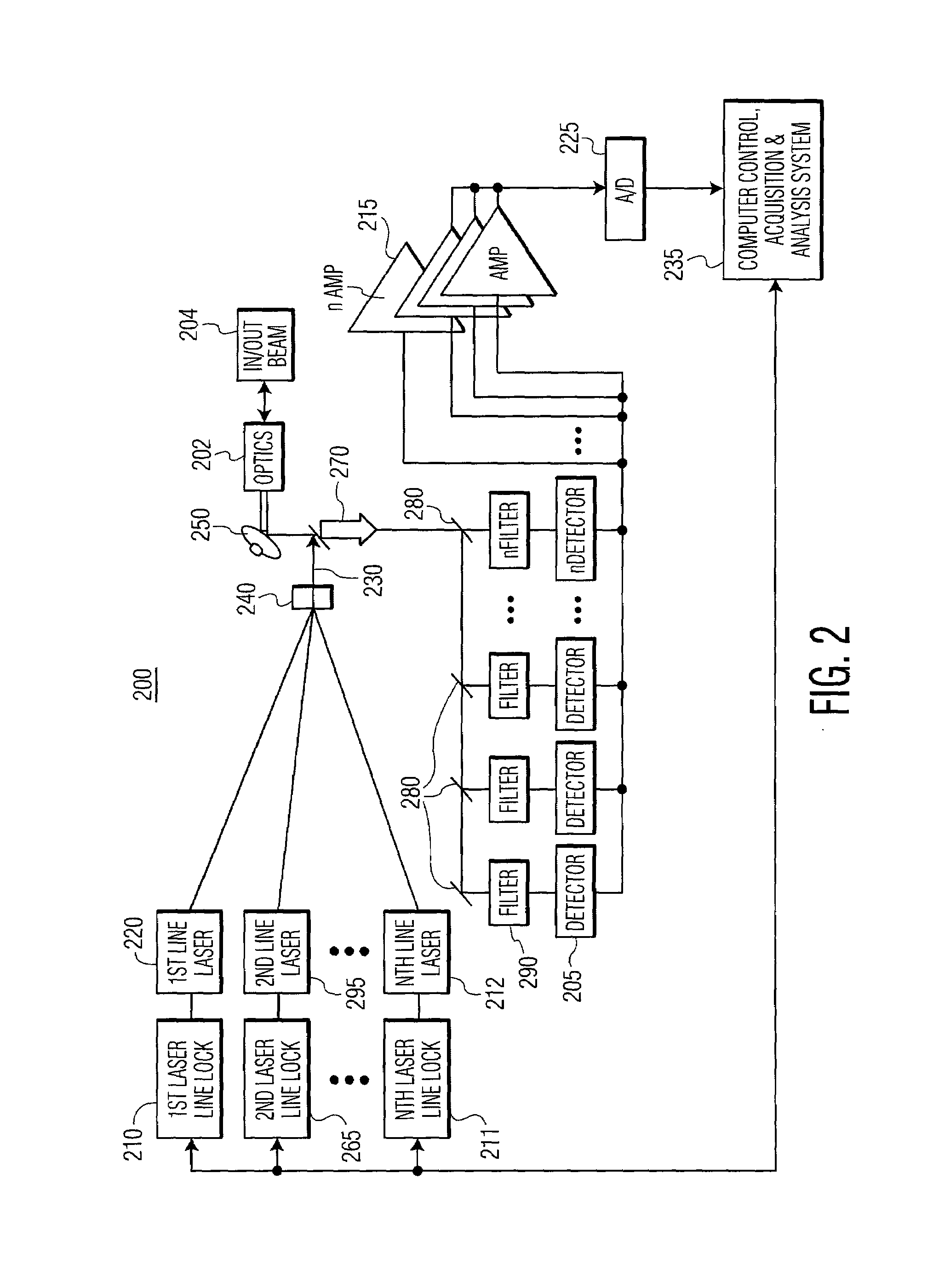Multi-sensors and differential absorption LIDAR data fusion
a multi-sensor, lidar data technology, applied in the direction of optical radiation measurement, instruments, using reradiation, etc., can solve the problems of high cost and inefficiency of target recognition based on data collected from multiple sensors, and the robustness of target recognition based on current fusion of multi-sensor data is questionable, and the data collected and stored in storage devices is useless
- Summary
- Abstract
- Description
- Claims
- Application Information
AI Technical Summary
Benefits of technology
Problems solved by technology
Method used
Image
Examples
Embodiment Construction
[0019]The present invention provides a method for reducing the amount of data required to be stored, processed and analyzed when attempting to remotely detect and recognize a target. The present invention provides an efficient, real-time and robust recognition of a target based on real-time multi-sensor target acquisition and fusion of data.
[0020]In one exemplary embodiment, the present invention begins operation of a multi-sensor system, based on an automatic look-up table (LUT). The LUT may be programmed based on prior information of a target and prior information on environmental conditions. Based on information stored in the LUT, one or more sensors may be automatically turned ON. Next, based on real-time processing of the sensors that are turned ON, a region of interest may be identified.
[0021]After the region of interest is identified, another set of one or more sensors may be automatically triggered to turn ON and begin processing data regarding the region of interest. After ...
PUM
 Login to View More
Login to View More Abstract
Description
Claims
Application Information
 Login to View More
Login to View More - R&D
- Intellectual Property
- Life Sciences
- Materials
- Tech Scout
- Unparalleled Data Quality
- Higher Quality Content
- 60% Fewer Hallucinations
Browse by: Latest US Patents, China's latest patents, Technical Efficacy Thesaurus, Application Domain, Technology Topic, Popular Technical Reports.
© 2025 PatSnap. All rights reserved.Legal|Privacy policy|Modern Slavery Act Transparency Statement|Sitemap|About US| Contact US: help@patsnap.com



